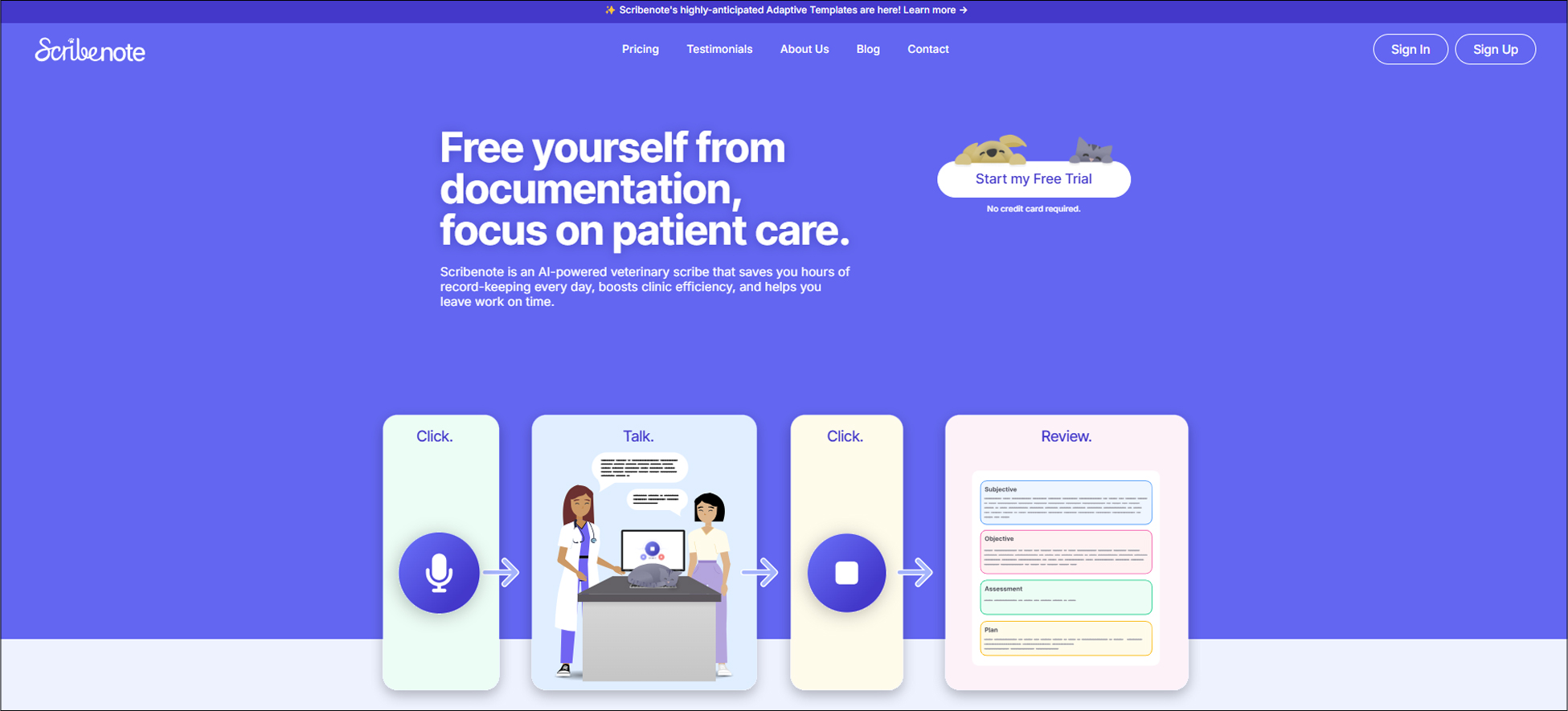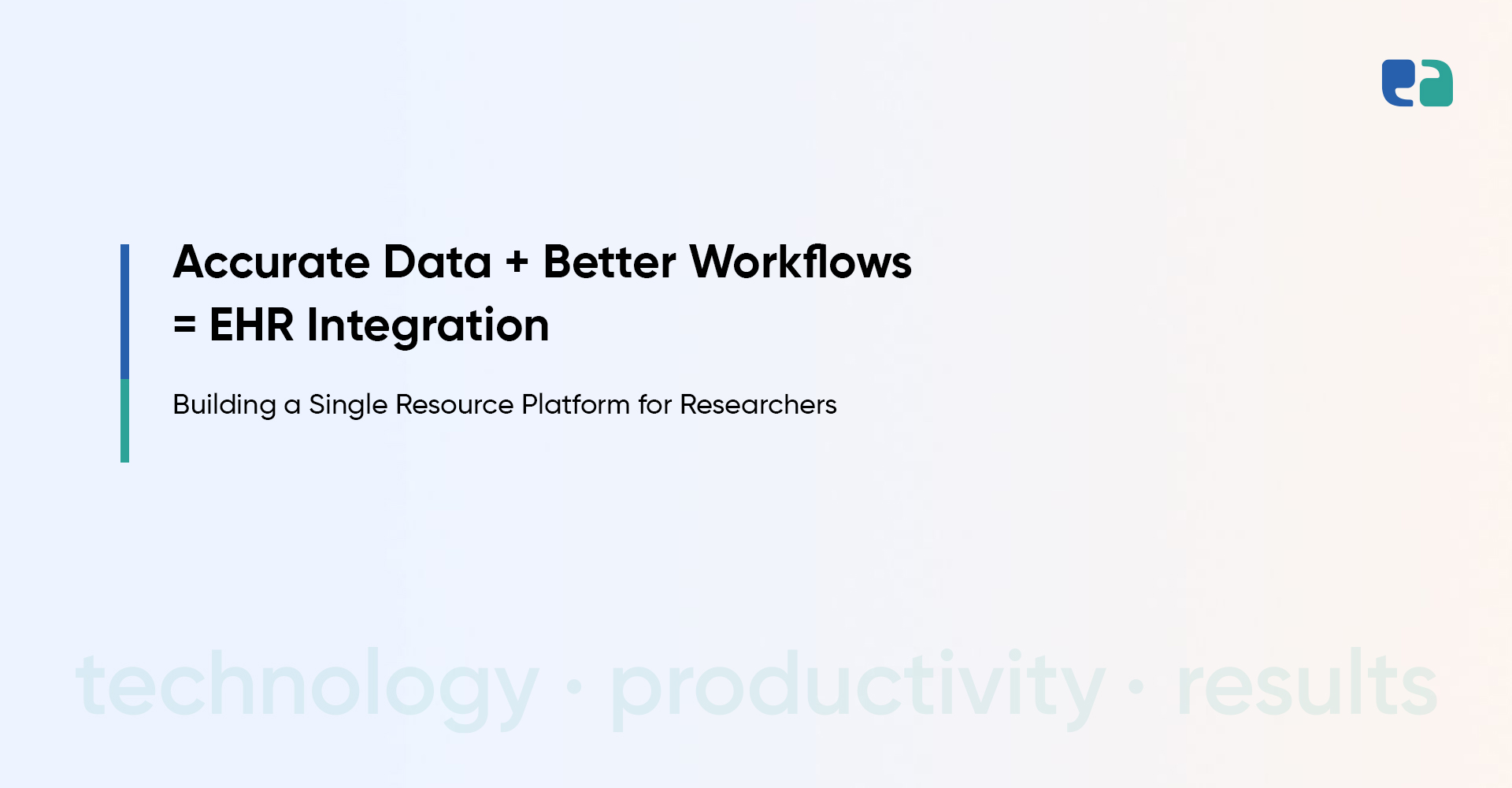The veterinary industry is facing a serious burnout crisis.
In fact, a staggering 86% of veterinarians report severe stress levels.
This burnout is caused by many factors, but one often overlooked issue is the huge amount of time spent on documentation.
Veterinarians are required to meticulously record every patient interaction, diagnosis, and treatment to meet strict legal and regulatory standards.
But with busy practices seeing up to 30 patients a day, there’s barely any time left for thorough record-keeping.
This leads to overtime work and rising stress levels.
But there’s hope.
AI scribe tools are starting to make a big difference.
These tools can automate and simplify documentation, helping to reduce the workload.
Not only do they improve the accuracy of medical records, but they also help veterinarians reclaim time, reduce stress, and get back to doing what they love—caring for animals.
In this blog, we’ll explore how building an AI scribe for veterinarians can revolutionize the way they work.
The Problem: Veterinarians Overwhelmed with Documentation
Veterinarians today face a significant challenge: the overwhelming burden of documentation.
Legal and regulatory requirements demand thorough records for every interaction, diagnosis, and treatment.
Benefits of AI Scribe Tools for Veterinarians
AI scribe tools bring several advantages to veterinary practices, making the documentation process more efficient and allowing veterinarians to focus on their patients. Here’s how they can transform the way veterinarians work:
1. Time Savings
AI scribe tools can save significant time by automating documentation tasks. This reduction in administrative work allows veterinarians to handle more consultations throughout the day.
- AI tools can save up to 70 minutes per day on documentation.
- Scribenote’s AI scribe has automated over 1.5 million medical records, saving veterinarians up to two hours a day.
2. Improved Accuracy
AI tools enhance the quality and accuracy of medical records.
They automatically convert spoken words into structured, detailed reports, ensuring thorough documentation of patient interactions and reducing the chance of errors.
3. Reduced Stress and Burnout
AI tools reduce the time spent on administrative tasks, alleviating stress and burnout among veterinarians.
- In a survey, nearly 90% of veterinarians reported severe stress levels. AI tools help address this issue by handling routine paperwork.
- Reducing administrative work improves the well-being of veterinarians, which, in turn, boosts retention rates across the industry.
4. Increased Productivity
With AI handling the documentation, veterinarians can increase their productivity.
- Less time spent on notes means more time to see patients and take on specialty work.
- This allows veterinarians to be more efficient in their day-to-day tasks and provide more comprehensive care to their patients.
5. Better Work-Life Balance
AI scribe tools contribute to a healthier work-life balance for veterinarians.
- Instead of staying late to finish notes, vets can focus solely on their patients during consultations and complete their work during office hours.
- AI tools help veterinarians reduce burnout, improve work precision, and provide a better quality of care, ultimately enhancing job satisfaction.
Real-World Example: Scribenote AI Scribe

Scribenote is a prime example of how AI-powered tools are transforming veterinary practices.
Founded by Ryan Gallagher in 2019, Scribenote was created to address the growing issue of documentation stress faced by veterinarians.
Ryan’s sister, Katie, a veterinarian, often found herself working long hours just to keep up with the paperwork, which sparked the idea for Scribenote.
This AI-powered scribe tool records conversations during appointments and key workflows, automatically generating accurate medical records.
By automating this process, Scribenote significantly reduces the time veterinarians spend on documentation, allowing them to focus more on patient care.
Since its inception, Scribenote has raised $8.2 million in seed funding and is now serving hundreds of clinics across North America.
In just under a year, the platform has automated over 1.5 million medical records, saving veterinarians up to two hours per day.
This not only helps reduce stress and burnout but also boosts overall productivity in veterinary practices.
Key Features to Look For in AI Scribe Tools
When selecting an AI scribe tool for your veterinary practice, it’s important to choose one that fits your needs and enhances your workflow. Here are the key features to consider:
1. Context Awareness
AI tools need detailed input to generate accurate and complete records.
Providing specific information about a pet’s condition—like the onset, duration, and severity of symptoms—helps the AI create precise medical records.
2. Audio Quality
While smartphones are generally sufficient, using a high-quality external microphone can improve the accuracy of transcription, especially in busy veterinary environments.
3. Multiple Input Methods
Whether it’s audio, text-based files (like PDFs), or scanned documents, having multiple options for input makes it easier to integrate all relevant information into a single record.
4. Customizability
Choosing an AI tool that allows you to customize templates, formats, and features ensures that the system meets your specific needs, making documentation faster and more efficient.
5. Team Collaboration
AI tools that support team collaboration can improve overall efficiency. Support staff can assist with initial note-taking or inputting client information, allowing the veterinarian to focus on patient care during consultations.
6. Veterinary-Specific Speech-to-Text
AI scribe tools tailored to veterinary terminology will provide more accurate transcription, ensuring medical terms and conditions are properly documented. This reduces errors and saves time.
7. EMR Integration
For seamless operation, the AI scribe tool should integrate with your existing Electronic Medical Records (EMR) system.
Features like syncing schedules and updating patient information across devices can save time and ensure records are always up to date.
8. Customizable Templates
Customizable templates for different species and treatments ensure that records are formatted in a way that suits your practice.
You can adjust templates to match the specific needs of your clinic, improving consistency and accuracy.
9. Real-Time Updates and Streamlined Workflows
Look for an AI tool that provides real-time updates, creating SOAP notes almost instantly after a consultation. This reduces time spent on paperwork and allows you to focus more on patient care.

The Technology Behind AI Scribe Tools
AI scribe tools are powered by advanced technologies that make documentation easier and faster for veterinarians. Here’s how they work:
- Natural Language Processing (NLP): NLP helps AI scribe tools understand spoken words and turn them into well-organized medical reports. This technology is key for accurately transcribing exam room conversations into medical records, saving veterinarians valuable time.
- Artificial Intelligence (AI): AI in these tools takes over most of the work of note-taking. It automatically scans transcripts and updates the relevant medical records, ensuring they are complete and compliant with regulations.
- Transcription: AI scribe tools are designed to transcribe audio from appointments into written records, making it faster and easier for veterinarians to document patient interactions.
- Data and AI Platforms: Some tools, like VetRec, are built on large-scale data and AI platforms. This ensures that the system can handle large amounts of information efficiently and accurately.
- Speech-to-Text Capabilities: AI scribes are specially designed to understand veterinary terminology. This allows them to transcribe notes with precision, using the correct medical terms for each situation.
These technologies come together to create an efficient solution that reduces the administrative burden on veterinarians, allowing them to focus more on patient care.
Challenges in Building an AI Scribe for Veterinarians
AI scribes can save time, but they come with challenges.
First, accuracy is key—if the AI doesn’t get enough context, records might be incomplete or even contain errors. It can’t make clinical decisions, so vets still need to review everything.
Then there’s user adoption. Every vet has their own way of documenting cases, so the AI needs to adapt.
It might take some time to get used to, but with the right setup, it can fit seamlessly into daily workflows.
Privacy is another big factor. Since AI scribes capture sensitive client and pet data, clinics need to get proper consent and ensure compliance with laws like PIPEDA/HIPAA.
How We Can Help You Build an AI Scribe for Veterinarians
At SyS Creations, we specialize in building AI-powered healthcare solutions, including AI scribes for veterinary practices. Here’s how we can help you bring your idea to life:
1. Understanding Your Needs
We start with in-depth market research to identify the biggest challenges veterinarians face in documentation. By collaborating with veterinary professionals, we ensure the solution directly addresses real-world pain points.
2. Developing a Tailored AI Solution
Our team of AI developers and healthcare IT specialists will:
- Choose the right technology stack for accurate speech-to-text and NLP processing.
- Train the AI with veterinary-specific terminology to ensure precise medical record generation.
- Continuously test and refine the model to improve accuracy and usability.
3. Ensuring Compliance & Data Security
We build AI solutions that comply with PIPEDA, HIPAA, and other data privacy laws to ensure veterinary records remain secure and confidential.
With over 10 years of healthcare IT expertise, SyS Creations is the perfect partner to develop an AI scribe that saves time, improves accuracy, and enhances efficiency for veterinary professionals.



